24 Hours Hotline: +86 137-3541-1378
Email:[email protected]
24 Hours Hotline: +86 137-3541-1378
Email:[email protected]
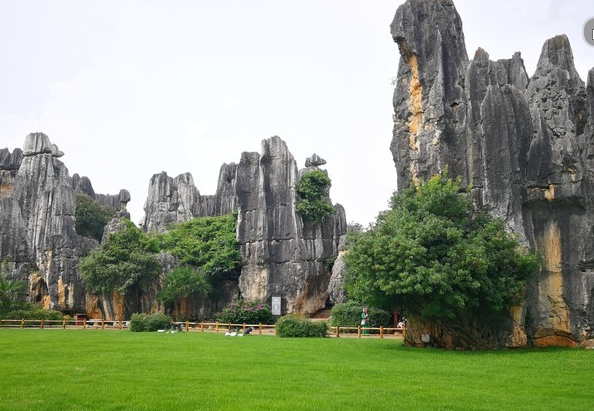
Introdution of Kunming
Kunming
is the provincial capital of Yunnan province, which borders with
Myanmar, Laos, and Vietnam to the south. At an elevation of 1,891m, the
city is surrounded by mountains on three sides, with one side facing
Dianchi Lake. With Wumeng Mountains in the north stemming the
south-blowing cold air and moisture in the south from the Bengal Bay
warm monsoon, Kunming enjoys a delightfully moderate climate year-round
and is reputed to be known as "Spring City." There is a fairly even
spread of temperature from April to September (15 C). The city can be
visited at virtually any time of the year and one needs to only pack
light clothing. Because of its favorable natural conditions, it has been
chosen as the venue for the International Horticulture Exposition.
History of Kunming
Archeological
evidence appears to indicate that Kunming has been inhabited for
approximately 2,000 years. Records can be traced back to 722-481 BC when
the first Chinese began inhabiting the area. Following this time, the
area surrounding present-day Kunming has been witness to a succession of
various kingdoms and dynasties.
The Kingdom of Dian was first established around Kunming during the Warring States period, and the township of Yizhoujun was established in 109 BC. The Nanzhao Kingdom took over Yizhoujun, making it one of its capitals. However, in 1274, the Mongols under Genghis Khan, captured the area (and pretty much most of China) as part of their quest to rule the world. Next, came the Ming Dynasty who claimed Kunming, then known as Yunnanfu. In the 19th century, tumultuous events marked the city due to several rebellious attacks against the reigning Manchus by the Muslims, led by the Sultan of Dali. This stream of violence and destruction was to continue for about fifteen years until the rebellion was finally overthrown.
During the turn of the
century, the imperial forces of Britain and France made their way to
Kunming, both of whom wanted to exploit the area's natural resources.
This paved the path for Kunming's development into modernism. During the
Second World War, Kunming proved to be invaluable for the Allied Forces
and Nationalists fighting against the Japanese. Because it was located
far from the Japanese forces, Kunming became the city to supply aid and
supplies for the troops. Supplies were carried to troops on the famous
Burma Road. Munitions factories sprang up in Kunming, as well as a
thriving black market. With an influx of Chinese refugees from the east
fleeing the Japanese, Kunming expanded as a city, establishing itself as
an industrial and manufacturing base.
Under
the reign of Mao Zedong, Kunming faced socially turbulent years during
the Cultural Revolution. Many individuals were persecuted, exiled and
tortured by the fanatical Red Guards. Many cultural relics were
destroyed as well, although a few temples and buildings managed to
survive. Geographically isolated from the government power base up
north, Kunming and Yunnan province has always stood apart from the rest
of China. It was often the place to send people into exile during the
revolution.
One of the major
developed cities in Southwest China, modern-day Kunming is thriving.
Recently, it has seen the growth of its tourism industry and increasing
foreign investment. The city is rapidly modernizing with more office and
residential buildings being built everyday.
Kunming Attractions
Yuantong Mountain
Yuantong
Mountain is located in Kunming area north of 26 hectares. Because of
steep mountains, dangerous rock towers, green shade, and therefore, "Luo
Feng Emerald," the name for one of the famous Kunming.Kunming Yuantong
built mountain zoo, feeding a monkey, langur, Panda, hornbill, lion,
elephant, leopard, zebra, Yunnan tiger, Yunnan tour package bison,
elephants, peacocks, cranes, Kuwana, etc. 500 kinds of rare birds and
animals, Peacock is particularly compelling. Yunnan "animal work
country" in miniature. There Aquarium Palace, display a variety of fish,
for people to watch.
Bamboo Temple
Bamboo
Temple (Qiongzhu) is a famous Buddhist temple situated about twelve
kilometers from Kunming in the Yu'an Mountains.Bamboo Temple is most
famous for the 500 Buddhist arhats (famous monks and saints from Chinese
Buddhism) that were sculpted from clay over seven years during the Qing
Dynasty when the temple was being rebuilt, by the renowned artist Li
Guangxiu and his students.
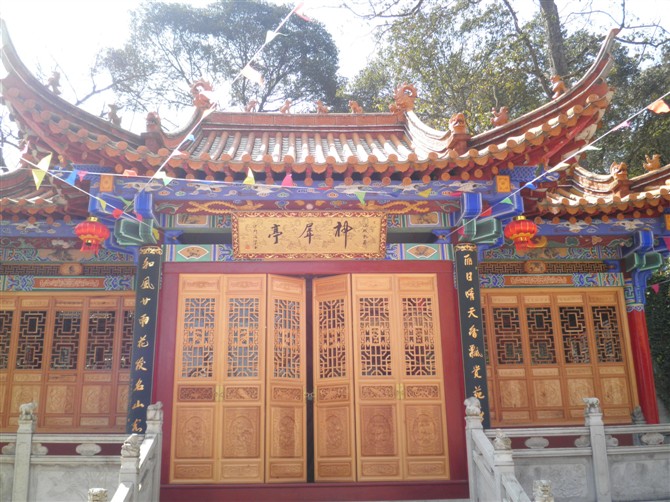
Dian Lake
Dianchi
Lake, also known as Lake Dian and Kunming Lake, is a large lake located
on the Yunnan-Guizhou Plateau close to Kunming, Yunnan, in southern
China. Its nickname is the "Sparkling Pearl Embedded in a Highland" and
it was the model for the Kunming Lake in the Summer Palace in Beijing.
Its name is the source of Yunnan's Chinese abbreviation ?.
It is a freshwater fault lake at 1,886.5 m (6,189 ft) above sea level. The lake covers 298 km2 (115 sq mi). It is 39 km (24 mi) long from north to south, and the average depth is 4.4 m (14 ft). It is the eighth largest lake in China and the largest in Yunnan Province.
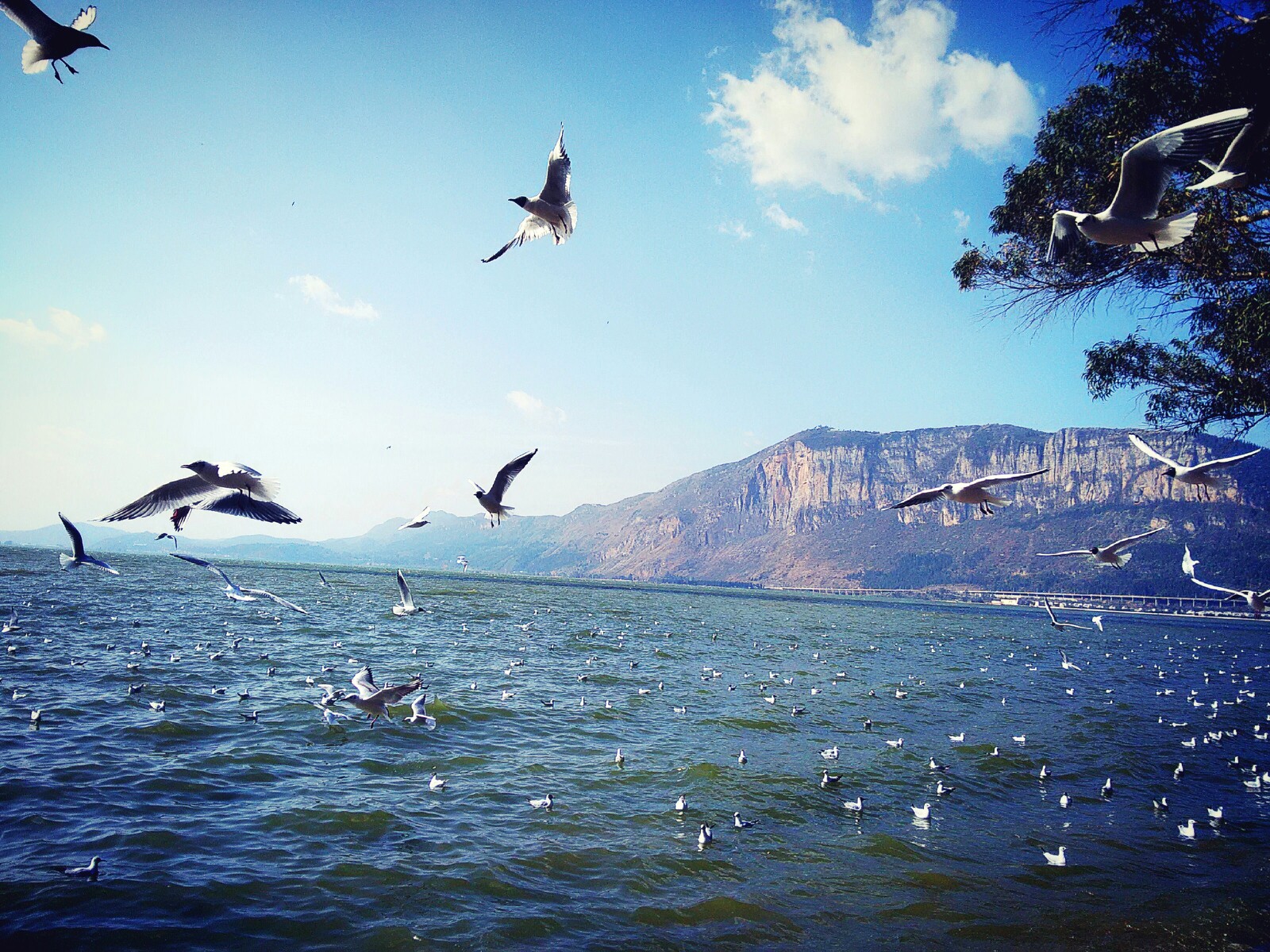
The Stone Forest
The
Stone Forest or Shilin is a notable set of limestone formations about
500 km^2 located in Shilin Yi Autonomous County, Yunnan Province,
People's Republic of China, near Shilin approximately 90 km (56 mi) from
the provincial capital Kunming.
The
tall rocks seem to fall to the ground in the manner of stalagmites, with
many looking like petrified trees thereby creating the illusion of a
forest made of stone. Have been UNESCO World Heritage Sites as part of
the South China Karst.
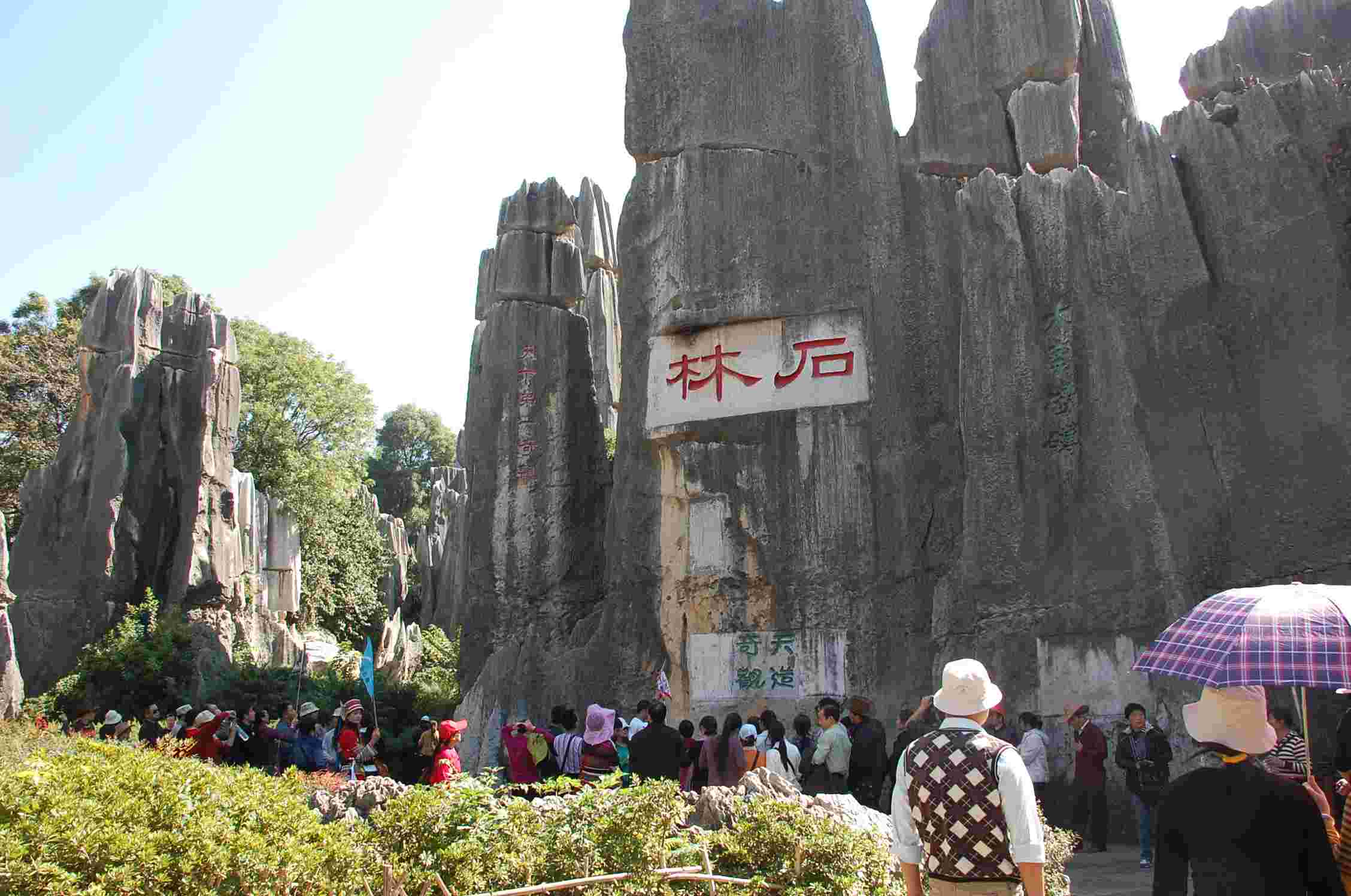
Golden Temple Park
The
Golden Temple was first built in 1602 during the Ming dynasty. located
on the Mingfeng Mountains, seven kilometres to the east of Kunming city,
there is a fine building made of bronze. It is commonly known as
Jindian, The Golden Temple Park, or Jindian Park, is a Taoist
bronze-tiled temple in Yunnan, China and has been preserved almost
completely since it was first built.
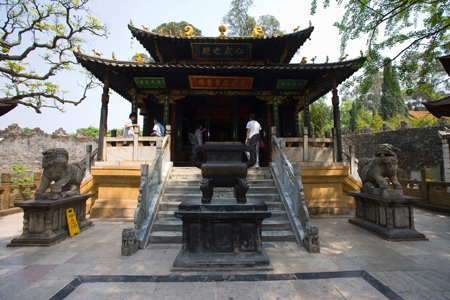
Kunming cuisine
Steaming-Pot Chicken
This
dish has a unique taste for the exquisite procedure and the superior
ingredients. Put the chicken in to a pot with a hollow tube in the
center with ginger, a shallot, mushroom, pepper and salt. While
steaming, steam from the tube contacts the cold pot cover turning to
water, then flows back into the pot to become delicious chicken soup.
After steaming for about four hours, a pot of delicious soup will be
finished.
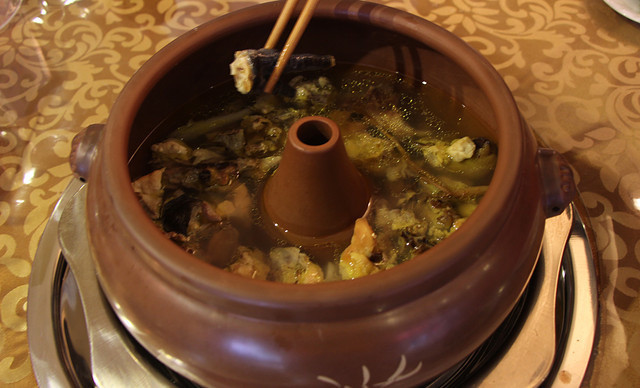
Bittern Duck
Enjoy
a history of about more than 600 years, this dish has become a first
choice for tourists. The ducks are fed in the Dianchi Lake. With ten
steps preparation, it can be served. Golden and bright with a soft
flavor, you will love it.
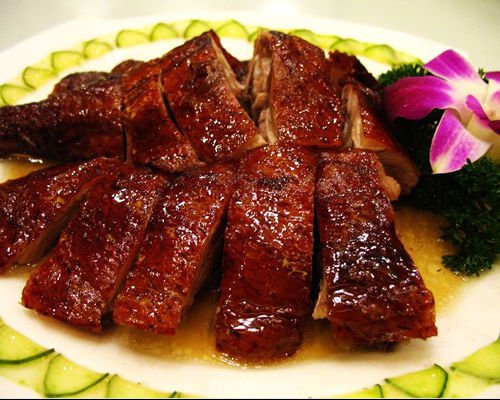
Across Bridge Rice Noodle
The
most popular dish for local people and tourists. It has three main
parts: a bowl of extremely hot chicken broth, various slices of meat,
including chicken, fish, and meat up to nine varieties, with various
seasonings and rice noodles. Put the meat and seasoning to the soup
first, then the rice noodles.
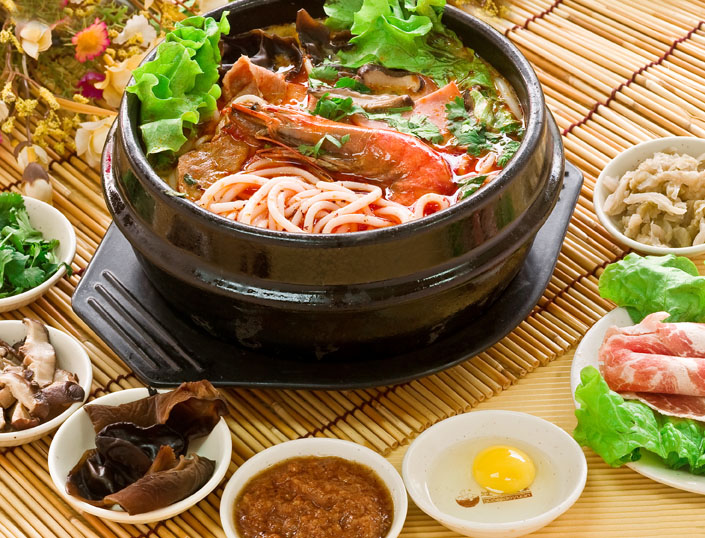
Rice Stewed with Bean
Rice Stewed with bean and ham is another famous dish in Yunnan, A pot of it made up of red ham, green bean and white rice.
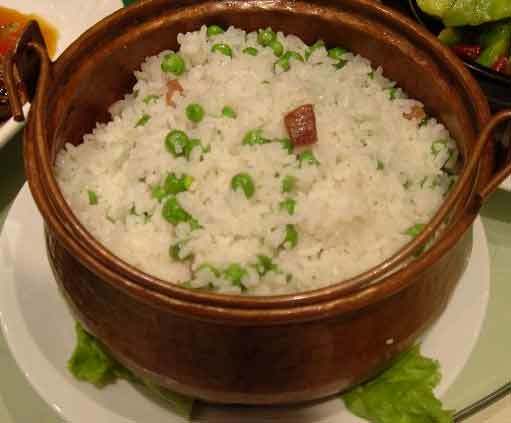
Minority in Kunming
Kunming
is home to many ethnic minority groups and is the focal point of Yunnan
minority culture. Among the existing 26 minority groups in the area,
the Yi, Bai, Dai, Naxi, and Zang (Tibetan), are the most famous. They
each have their own independent cultures, customs, languages, and
history. Most of them also have their own religious beliefs, including
Tibetan Buddhism, Taoism, and Islam. In the past couple of thousand
years, they have co-existed in peace and harmony. At present, many live
in over-lapping areas and biracial marriages between them are quite
normal.
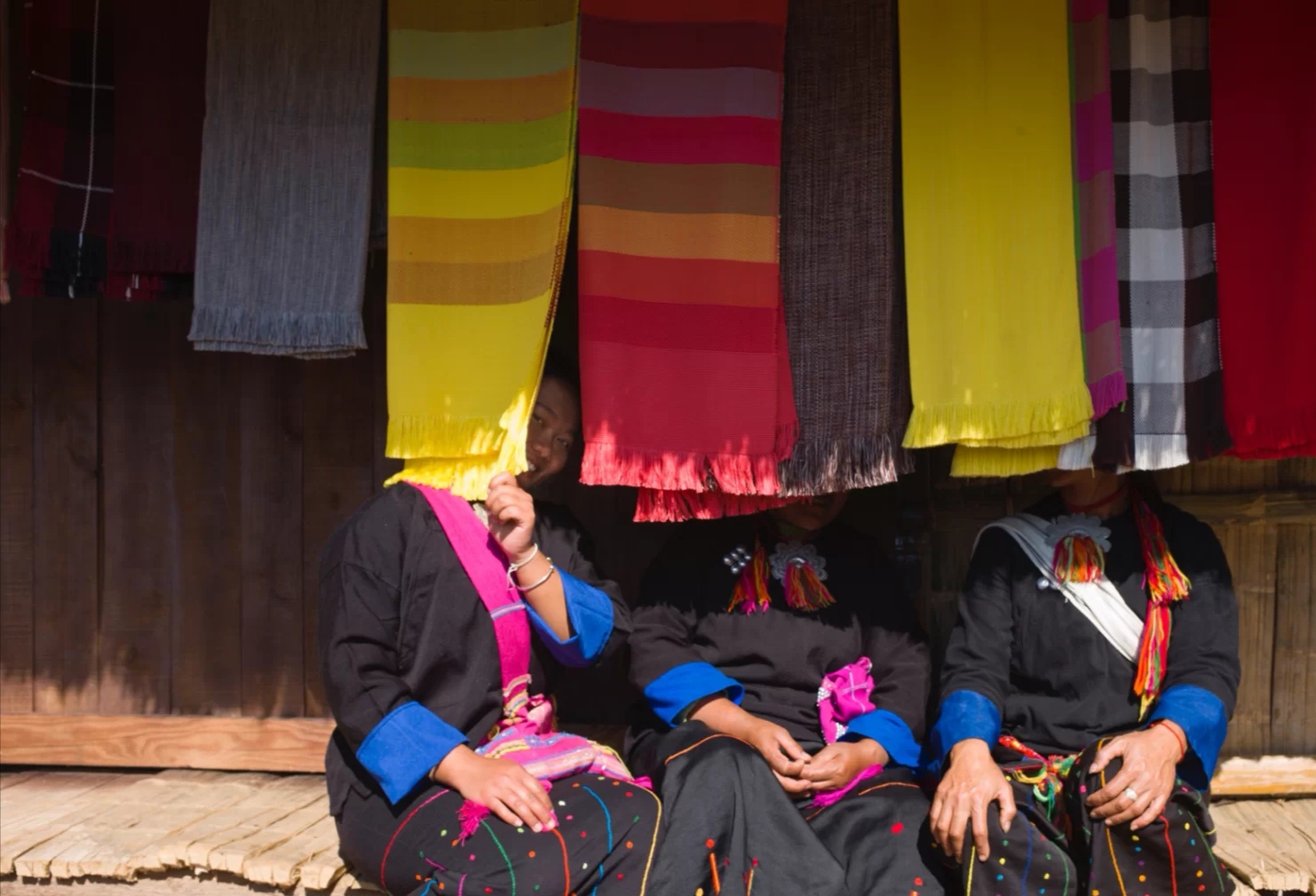
Prev: Zhangjiajie
Next: Hangzhou
Wechat: Chinaprivatetour
24 Hours Hotline:
+86 137-3541-1378
* Authentic Experiences: Genuine local experiences that immerse you in the true essence of Shanghai and beyond.
* Safety First: Highest safety standards with secure activities and reliable transportation.
* Customizable Tours: Flexible itineraries tailored to your interests and needs.
* Local Expertise: In-depth knowledge of Shanghai and China, offering exclusive insights.
* Professional Guides: Licensed bilingual guides with over 5 years of experience.
* Comfortable Travel: Experienced drivers and well-maintained vehicles for a smooth journey.
* Sustainable Tourism: Commitment to responsible tourism and supporting local communities.
* Customer-Focused: Personalized service and continuous improvement based on your feedback.
* Free Cancellation: Cancel up to 24 hours before travel for flexibility and peace of mind.
* 24/7 Support: Round-the-clock assistance for any questions or help needed.
1 to 1 tailor-made service from our professional travel advisors for the most sophisticated
Constantly excellent reviews for attraction, hotel and service Competitive price
Local experts provide quality tours Best selected knowledgeable local guides Authentic local restaurants
7*24 hours available to create you a worry-free tour. No Hidden Fees and absolutely no pressure to buy. Secured







